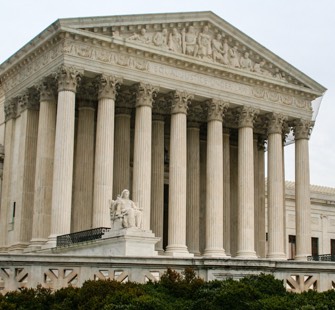New Post Grant Rules Become Effective, No Changes to Motions to Amend
 On April 1, 2016, the United States Patent and Trademark Office published final rules in the Federal Register that relate to post grant proceedings. These new final rules went into effect on May 2, 2016, and amend the existing PTAB trial practice rules pertaining to inter partes review (IPR), post grant review (PGR), covered business method (CBM) review, and derivation proceedings brought into being by provisions of the America Invents Act (AIA).
On April 1, 2016, the United States Patent and Trademark Office published final rules in the Federal Register that relate to post grant proceedings. These new final rules went into effect on May 2, 2016, and amend the existing PTAB trial practice rules pertaining to inter partes review (IPR), post grant review (PGR), covered business method (CBM) review, and derivation proceedings brought into being by provisions of the America Invents Act (AIA).
In a nutshell, these new rules change existing practice by allowing new testimonial evidence to be submitted with a patent owner’s preliminary response, adding a Rule 11-type certification for papers filed in a proceeding, allowing a claim construction approach that emulates the approach used by a district court following Phillips v. AWH Corp., 415 F.3d 1303 (Fed. Cir. 2005) for claims of patents that will expire before entry of a final written decision, and replacing the current page limit with a word count limit for major briefing. These final rules are the culmination of a process started two years ago. For more information on the changes taking effect, please see Patent Office amends PTAB Trial Practice Rules.
Many had hoped that the Office would make it easier for patent owners to successfully amend patent claims in post grant proceedings, but the Office stood firm.
Coalition for Affordable Drugs IPR against Juxtapid gets “green light”
 The Coalition for Affordable Drugs, the entity backed by patent renegades Kyle Bass and Erich Spangenberg, recently won two more victories at the Patent Trial and Appeal Board (PTAB). This time Bass and Spangenberg obtained favorable inter partes review (IPR) institution decisions on two petitions filed against the University of Pennsylvania, which challenged patents covering Juxtapid. Juxtapid is a drug that slows cholesterol production thereby making it easier for the body to remove remaining cholesterol from the bloodstream. To read these institution decisions see IPR2015-01835 and IPR2015-01836. Because the Board did not find it necessary to construe claim terms at the institution stage, both decisions are mirror images of one another.
The Coalition for Affordable Drugs, the entity backed by patent renegades Kyle Bass and Erich Spangenberg, recently won two more victories at the Patent Trial and Appeal Board (PTAB). This time Bass and Spangenberg obtained favorable inter partes review (IPR) institution decisions on two petitions filed against the University of Pennsylvania, which challenged patents covering Juxtapid. Juxtapid is a drug that slows cholesterol production thereby making it easier for the body to remove remaining cholesterol from the bloodstream. To read these institution decisions see IPR2015-01835 and IPR2015-01836. Because the Board did not find it necessary to construe claim terms at the institution stage, both decisions are mirror images of one another.
The patents in question, U.S. Patent No. 7,932,268 and U.S. Patent No. 8,618,135, relate to “the surprising discovery that one may treat an individual who has hyperlipidemia and/or hypercholesterolemia with an MTP inhibitor in a manner that results in the individual not experiencing side-effects normally associated with the inhibitor, or experiencing side-effects to a lesser degree.”
Ultimately, the Board determined that the petitioner demonstrated that the claims challenged were likely invalid because they were obvious. The case will now proceed through the administrative trial. There were, however, several issues that came up in the institution decision that warrant consideration.
04.5.16 | Inter Partes Review, Patent Issues, USPTO | Gene Quinn
Supreme Court will decide whether BRI or Phillips standard applies to IPR claims
 During patent examination, pending patent claims are given the broadest reasonable interpretation (“BRI”) that is consistent with the specification, as would be understood by one of ordinary skill in the art. See Phillips v. AWH Corp., 415 F.3d 1303, 1316 (Fed. Cir. 2005).
During patent examination, pending patent claims are given the broadest reasonable interpretation (“BRI”) that is consistent with the specification, as would be understood by one of ordinary skill in the art. See Phillips v. AWH Corp., 415 F.3d 1303, 1316 (Fed. Cir. 2005).
The Patent Office applies the broadest reasonable interpretation in virtually all circumstances. It is, however, true that at least one situation where the Patent Office does not use broadest reasonable interpretation is when a reexamination of a patent is undertaken and reexamination will not be concluded until after the patent term has expired. The position of the USPTO is that, in this situation, a patent could not be changed because the term has expired; therefore, the only remaining “life” a patent has would be in litigation because the statute of limitations for a patent infringement action is six years. Thus, the USPTO applies the Phillips standard. (Further discussion of this advanced topic goes beyond the scope of this article, which is intended to be a primer on the broadest reasonable interpretation standard.)
Finjan shows patent owner can prevail at IPR institution stage
 Finjan Holdings, Inc. (NASDAQ: FNJN), the parent of wholly owned subsidiary Finjan, Inc., recently announced that the Patent Trial and Appeal Board (PTAB) for the United States Patent & Trademark Office (USPTO) denied six of Symantec Corporation’s petitions for inter partes review (IPR) of Finjan patents.
Finjan Holdings, Inc. (NASDAQ: FNJN), the parent of wholly owned subsidiary Finjan, Inc., recently announced that the Patent Trial and Appeal Board (PTAB) for the United States Patent & Trademark Office (USPTO) denied six of Symantec Corporation’s petitions for inter partes review (IPR) of Finjan patents.
“This is an unprecedented response by the US Patent Office,” stated Phil Hartstein (left), President and CEO of Finjan, upon learning of the decision of the PTAB.
The word “unprecedented” gets thrown around all too frequently, but the use of the word here does seem entirely appropriate. That Finjan would prevail in six separate IPR institution decisions relating to the same patent litigation seems nothing short of extraordinary given that the PTAB is instituting 80% of IPR petitions, and given how slanted IPR rules are against the patent owner, particularly at the institution stage.
03.9.16 | Inter Partes Review, Patent Issues, USPTO | Gene Quinn
Federal Circuit shines ray of hope for substitute claims in IPR
 Recently, the United States Court of Appeals for the Federal Circuit issued a decision in Nike, Inc. v. Adidas AG, relating to an appeal from the inter partes review (IPR) of U.S. Patent No. 7,347,011, owned by Nike.
Recently, the United States Court of Appeals for the Federal Circuit issued a decision in Nike, Inc. v. Adidas AG, relating to an appeal from the inter partes review (IPR) of U.S. Patent No. 7,347,011, owned by Nike.
The Patent Trial and Appeal Board (PTAB) of the United States Patent and Trademark Office (USPTO) granted the IPR petition filed by Adidas AG and instituted inter partes review of claims 1–46 of the ’011 patent. Nike then filed a motion to amend in which it requested cancellation of claims 1–46 and proposed substitute claims 47–50. The PTAB granted the motion to cancel claims 1-46, but denied the motion to substitute claims, as has become the norm in virtually all cases.
02.29.16 | CAFC, Federal Circuit Cases, Inter Partes Review, Patent Issues, posts, USPTO | Gene Quinn


No Comments
05.5.16 | Inter Partes Review, Patent Issues, Post Grant Review, USPTO | Gene Quinn